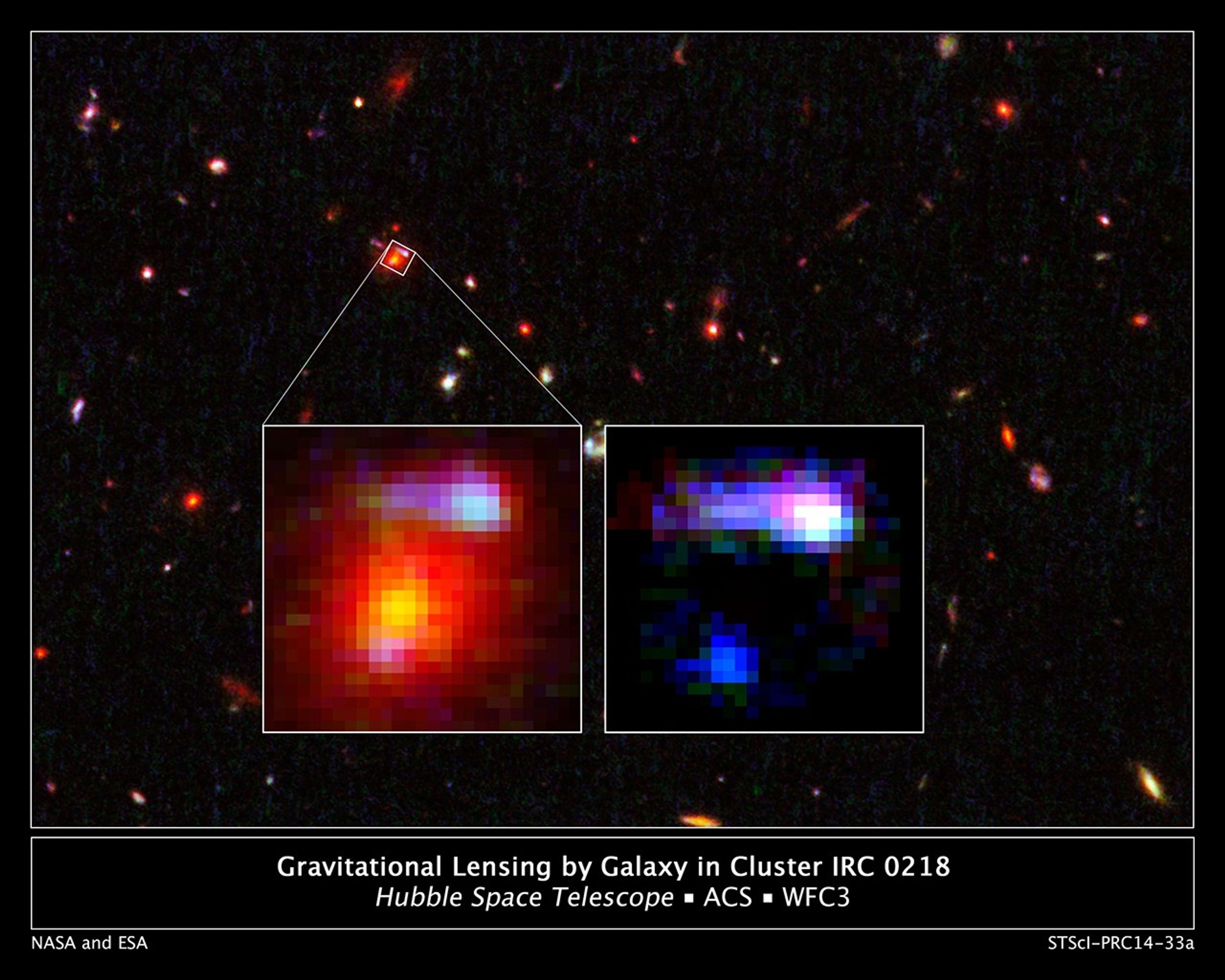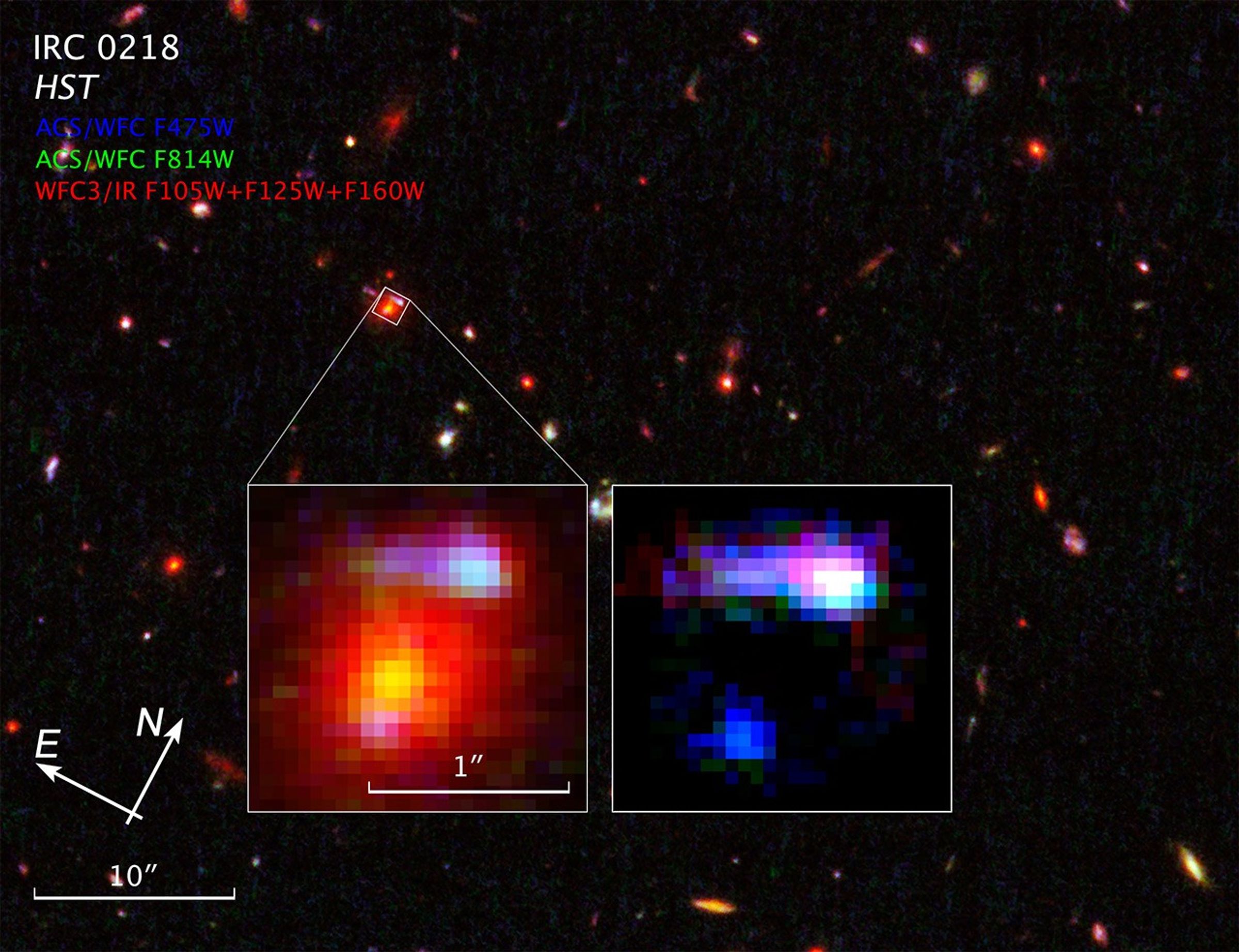1 min read
Galaxy Cluster IRC 0218 (clean)

About the Object
- R.A. PositionR.A. PositionRight ascension – analogous to longitude – is one component of an object's position.3h 32m 38s.5
- Dec. PositionDec. PositionDeclination – analogous to latitude – is one component of an object's position.-05° 10' 19".9
- ConstellationConstellationOne of 88 recognized regions of the celestial sphere in which the object appears.Eridanus
About the Data
- Data DescriptionData DescriptionProposal: A description of the observations, their scientific justification, and the links to the data available in the science archive.
Science Team: The astronomers who planned the observations and analyzed the data. "PI" refers to the Principal Investigator.The image was created from Hubble data from the following proposal: 12590, PI: C. Popovich (Texas A & M University) et al. The science team comprises: K. Wong (Academia Sinica Institute of Astronomy & Astrophysics, Taiwan), K.-V. Tran (Texas A&M University), S. Suyu (Academia Sinica Institute of Astronomy & Astrophysics, Taiwan), I. Momcheva (Yale University), G. Brammer (STScI), M. Brodwin (University of Missouri), A. Gonzalez (University of Florida), A. Halkola and G. Kacprzak (Swinburne University), A. Koekemoer (STScI), and C. Papovich (Texas A&M University). - InstrumentInstrumentThe science instrument used to produce the data.HST>ACS/WFC and HST>WFC3/IR
- Exposure DatesExposure DatesThe date(s) that the telescope made its observations and the total exposure time.November and December 2011, Exposure Time: 3.3 hours
- FiltersFiltersThe camera filters that were used in the science observations.ACS/WFC: F475W (g) and F814W (I) WFC3/IR: F105W (Y), F125W (J), and F160W (H)
- Object NameObject NameA name or catalog number that astronomers use to identify an astronomical object.IRC 0218
- Object DescriptionObject DescriptionThe type of astronomical object.Gravitational Lensing Cluster of Galaxies
- Release DateJuly 31, 2014
- Science ReleaseHubble Shows Farthest Lensing Galaxy Yields Clues to Early Universe
- Credit

Color Info
Color InfoA brief description of the methods used to convert telescope data into the color image being presented.
This image is a composite of separate exposures acquired by the ACS/WFC and WFC3/IR instruments. Several filters were used to sample various wavelengths. The color results from assigning different hues (colors) to each monochromatic (grayscale) image as follows: Blue: F475W (g) Green: F814W (I) Red: F105W (Y) + F125W (J) + F160W (H)

Compass and Scale
Compass and ScaleAn astronomical image with a scale that shows how large an object is on the sky, a compass that shows how the object is oriented on the sky, and the filters with which the image was made.
Related Images & Videos

Gravitational Lensing by Galaxy in Cluster IRC 0218
These Hubble Space Telescope images reveal the most distant cosmic lens yet found, a massive elliptical galaxy whose powerful gravity is magnifying the light from a faraway galaxy behind it. The giant elliptical is the red object in the enlarged view at left. Its red color comes...
Share
Details
Last Updated
Aug 17, 2025
Contact
Media
Claire Andreoli
NASA’s Goddard Space Flight Center
Greenbelt, Maryland
claire.andreoli@nasa.gov































